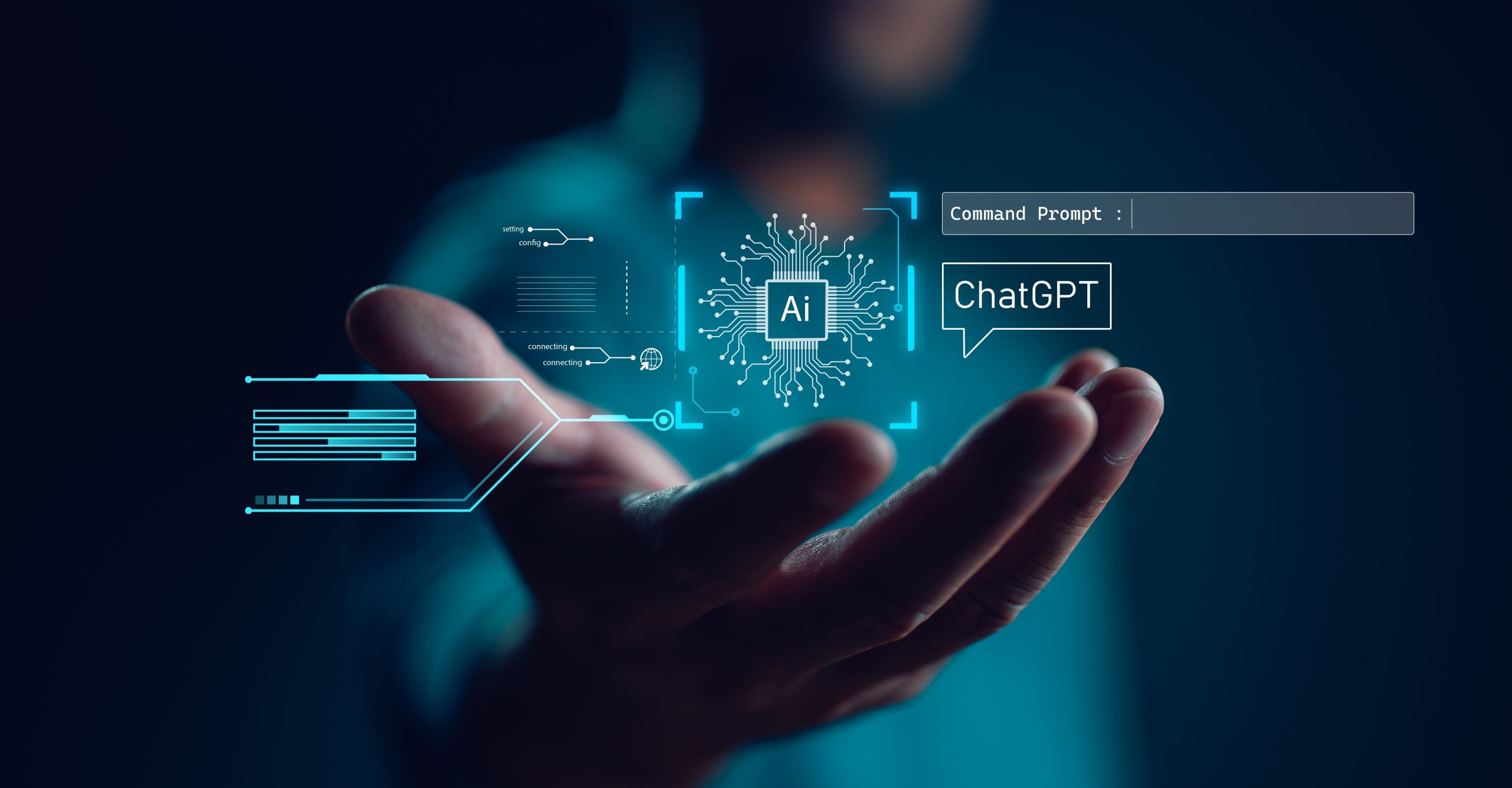AI in 2024: how entrepreneurs are implementing this technology in their companies
The rise of generative AI is disrupting almost every sector, including the entrepreneurial ecosystem. Startups and scaleups like ODILO, Trucksters, or Freepik are among the companies betting on this technology to add value to their users and share their insights for other entrepreneurs to incorporate it.
“Can machines think?” This question, posed by Alan Turing, defined the origins of artificial intelligence (AI). Over 70 years after its inception, the debate continues and has intensified in recent months with the rise of generative AI, capable of creating content in text, video, audio, or images similar to humans and driven by the emergence of tools like ChatGPT (OpenAI), Copilot (Microsoft), or the recently unveiled Gemini (Google).
Generative AI has positioned itself as one of the most prominent technological trends. Following its popularization in the past year, BBVA Spark, Deloitte, or Capgemini anticipate that 2024 will be the year of its implementation in the corporate sphere, where it can help improve processes, reduce administrative burdens, or increase productivity.
“The integration of AI into businesses, especially generative AI, should be like adding a new role to your team responsible for being creative and efficient,” explains Francisco Maturana, Global Head of GenAI at BBVA. “The key is not to use it as a tool but to integrate it as a strategic partner.”
According to Maturana, the adoption of generative AI offers “a variety of strategic benefits for companies and entrepreneurs,” which can enhance both personalization and user experience as well as optimization and operational efficiency, profitability, or decision-making, in addition to the conceptualization of new products.
“Generative AI raises the possibility of imagining new data-based products that did not exist until now: we should not only think about improving the processes we already have today but also about what new things could be offered to society in the coming years,” Maturana says. Companies like ODILO, Freepik, or Trucksters are some of those adopting this technology to enhance their services and add value to their partners, clients and users.

ODILO: AI as support for students, teachers, staff and managers
The vast possibilities that artificial intelligence offers to companies have not gone unnoticed by the ecosystem, where companies plan to increase their investment in this technology in the coming years. A recent IBM study reveals that currently 42% of companies with more than 1,000 employees actively use AI in their business, and 59% of these companies plan to increase their investment in the coming years. Additionally, 40% of companies that have not yet implemented this type of solution are actively exploring its possibilities.
“If we consider what the future society will be like, it’s hard to imagine that artificial intelligence won’t be present,” says Rafael Luengo, Learning Factory, Data & Postsales Director at ODILO. This ‘edtech’ scaleup, which offers an extensive catalog of content with more than 4 million resources, has shown a clear commitment to adopting artificial intelligence in three dimensions: integration into internal processes, adding value to products and services, and analyzing its impact within the education sector.
“We are integrating AI into our internal processes, focusing on efficiency and costs, for video creation, designs, translations, and as support for code creation,” Luengo explains. Additionally, the company has developed an assistant to help teachers create courses, help employees continue to develop new skills through ‘Learning Experiences’ and provide visibility through data to facilitate decision-making. In the future, it plans to create a virtual coach to track and encourage students to continue their education.
The adoption of AI has brought benefits to the company, both commercially and productively. “We have been able to increase our efficiency by reducing costs and generate commercially interesting relationships thanks to its adoption,” points out Luengo.

Freepik: Generative AI to create new designs
Luengo’s words align with those of Omar Pera, VP of Labs and AI at Freepik: “AI is a tool, and as such, it must be used: a tool does not replace a person, but it does give them more capacity to work better, delve deeper, or achieve results that would not be possible otherwise,” he says.
In this Spanish startup, which offers a platform where users can find images and graphic resources to create their own designs, the integration of this technology has extended to almost all departments and products. “We have implemented AI functionalities in design tools that we already offered to users and created new products based on AI,” explains Pera.
According to Pera, the adoption of AI has placed the company in “a unique position to be the first to test new features, adapt what we like, and show users the uses and benefits of this technology.”
Among its new creations, Freepik Pikaso stands out, a tool that uses AI to offer users the possibility of creating images in real-time with basic instructions and can be combined with other generative AI tools like Dall-E (OpenAI) or Midjourney. “It helps people without knowledge of drawing tools to express their ideas, and experts themselves to achieve extraordinary results,” notes Pera.
Trucksters: AI to optimize routes for its drivers
While Freepik offers users the possibility to use generative AI to create their own designs, Trucksters, a company in the logistics sector dedicated to optimizing long-distance freight transport, uses AI to improve its services. Specifically, to optimize the routes for its drivers.
“We make plans based on certain requirements related to our business idea, such as drivers being able to return home more frequently or the cargo not stopping, so that we can make shipments more quickly,” explains Borja Menéndez, Head of Operations Research at the company. “Thanks to artificial intelligence, we can carry out our work more efficiently and offer better service to our partners and clients,” he adds.
Despite the benefits in the adoption of artificial intelligence, Menéndez identifies some challenges that are applicable to all companies investing in these solutions. “You need to have all the necessary data digitized to be able to carry out operations digitally, and for that, it is essential to have processes where you ensure that the data is of good quality,” he explains.
Looking to the future, Menéndez points out that generative AI could evolve to continue improving decision-making and help with integrations. “When, for example, a message comes from a customer or partner, it could analyze that text and standardize it more easily,” he suggests.

The challenges that define the future of AI
The International Monetary Fund estimates that about 40% of jobs worldwide are exposed to AI, and around 60% of jobs in advanced economies could be affected by it, opening up a range of opportunities and challenges for the ecosystem.
In recent months, various organizations have begun to advance in the regulation of AI. This is the case of the European Union, which recently approved its artificial intelligence law, or the United States Government, which in the last quarter of 2023 issued an executive order establishing a set of rules and guidelines for AI.
“These regulations encourage startups to prioritize ethics and transparency in their AI developments, fostering consumer trust and corporate responsibility,” says Maturana of BBVA. “Although adapting to these regulations may require initial efforts in terms of compliance and process review, in the long term, these standards can act as catalysts for responsible innovation: not only do they protect consumers and society, but they also guide startups towards more sustainable and ethically aligned growth,” he adds.
Generative artificial intelligence has been a revolution for the ecosystem, and its adoption will be crucial for staying at the top of the market. “If you want to remain competitive, companies have to adopt AI to increase employee productivity and improve their products and services: you won’t lose your job because of AI, but because another company in your same sector is using it,” Pera of Freepik says. Beyond the business scope, AI can offer clear advantages to the education sector as a whole, improving the relationship between teachers and students.
“Artificial intelligence will not replace the tutor or teacher, but it can help them be closer to the student: by obtaining data that could not be obtained before, they can better understand, recommend, and guide them,” Luego of ODILO says.
Improved decision-making, increased productivity, or the ability to offer more personalized attention to users are among some of the advantages this technology can offer to companies and entrepreneurs, but AI and, particularly, generative AI are still in their infancy. “The evolution of generative AI has a long way to go,” notes Menéndez of Trucksters. Legislative development and its assimilation by the entrepreneurial ecosystem will be key to making the most of this technology.



